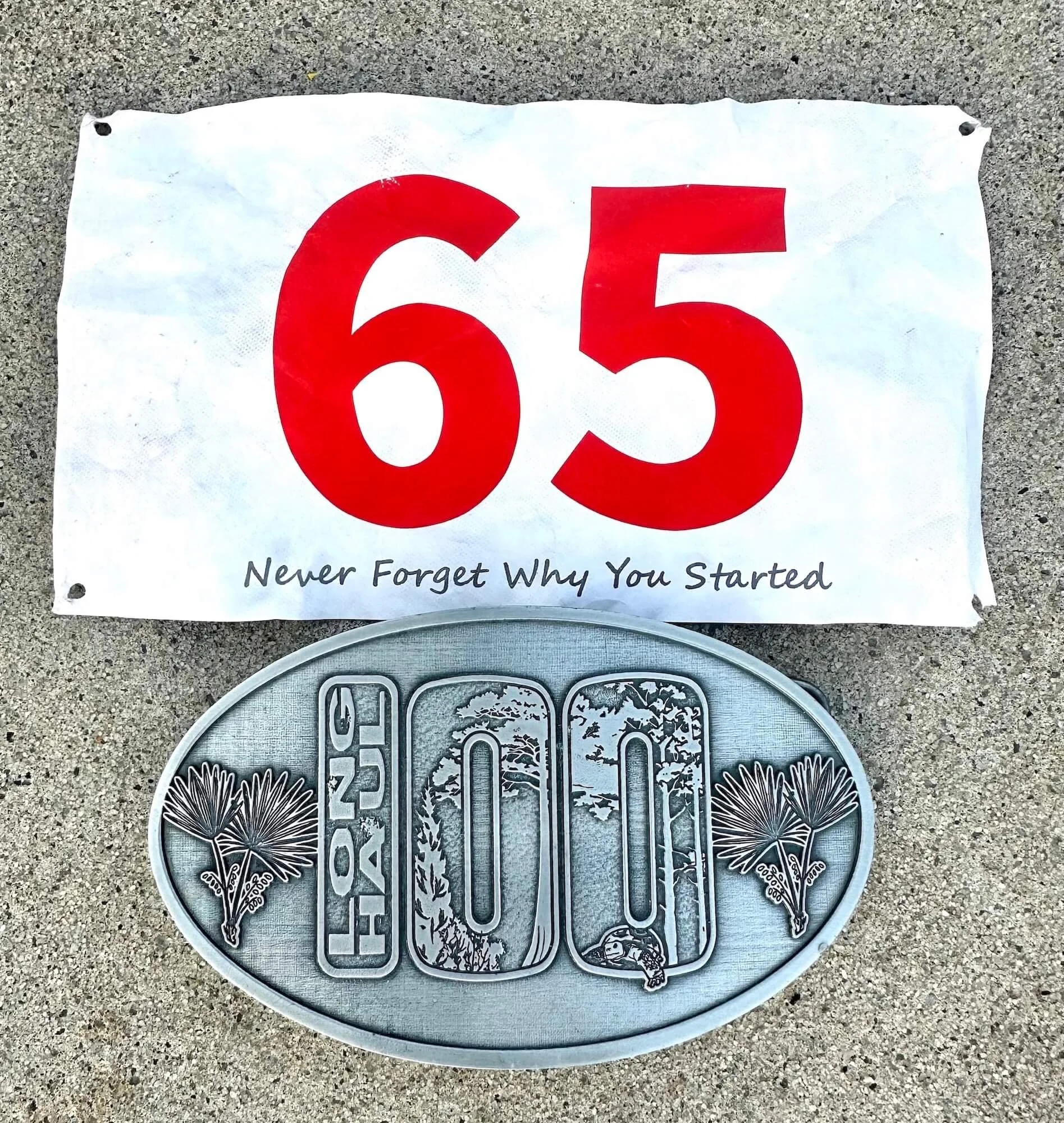Going to Miss Your Goal? Your Thinking Determines What Happens Next
After five grueling laps at Long Haul 100, I limped into the start/finish aid station, exhausted and frustrated. The first two laps (32 miles) felt great. On the fourth loop (50 miles) at night, I slowed more than expected, but Lap 5 in the deepest night took it out of me. I was falling asleep, barely moving, convinced it had taken twice as long as the others.
The race has a 32-hour cutoff, but my goal was a sub-30 finish. I’d been running better than I had in years and had a nice 70 mile training run a few weeks earlier at Across the Years. But I’d also spent too much time at aid stations, planning to make it up later—and hadn’t. Now, stiff, hurting, chafing, and likely dealing with blisters, I knew I wouldn’t be running a fast-enough final lap to make up for all the slowness. Just the thought being out for hours on yet another lap was daunting. Dropping would have been a reasonable option.
But here is where I used the Mindshift Process I teach my clients to turn my thinking into a powerhouse. I thought about the decision to do the last lap.
“I show up to finish. That’s why I’m here. That’s who I am.” Keeping promises to myself matters so dropping simply isn’t an option.
And at 61, after years of injury, I also don’t take 100-mile finishes for granted.
So I started Lap 6—walking at first. “One step, two steps, three steps…closer to the finish.”
A tenth of a mile in, I got restless and thought, “I’m ready to be done, and the fastest way to get done is to run.”
After walking a lot in the night, running at dawn usually seems impossible but experience tells me, “You don’t know until you try.” So I did.
I quickly settled into a groove, and thought, “I wonder what I’ve got left. Wouldn’t it be fun to find out?” I grinned at the idea. So I started pushing the pace and cut the walk breaks.
Then a thunderstorm hit and it began to pour. I could have decided, “That’s it, I’m done,” and dropped at the closest aid station. Instead, I got irritated with it and thought, “That’s it! I’m done,” and ran harder.
It felt so good, I decided, “I only have part of one lap left. I’m going to put it all out there and see what I’ve got. I’ve got nothing to lose.”
I ran at the edge of my limits, for the pure exhilaration of it, all the way in and finished in 29:54 - sub 30 after all.
Races rarely go perfectly. It’s easy to reach a point where you think, “I can’t finish. It’s not worth continuing. Why put myself through more suffering?” Or in my case, “It’s not worth hurting more. I can walk it in.” But that thinking guarantees an average finish or a DNF when you could have more.
The mental block in your way isn’t missing the goal—it’s believing the goal is the only thing that matters, nothing else.
If you let go of this all-or-nothing thinking, you’ll see the deeper value in fighting on: when the goal is out of reach, the effort is still worth it because of what it says to you about yourself - that you’re worth the fight. That you deserve a race you’re proud of, no matter what.
You chase goals because they’re something to be proud of. But even if you miss, you can still create a race you’re proud of - if you shift your thinking.
My sub-30 finish was great, but what meant more to me is how I ran that last lap—with everything I had.
When your goal slips away, your pride in your effort doesn’t have to. That’s always in your control.

